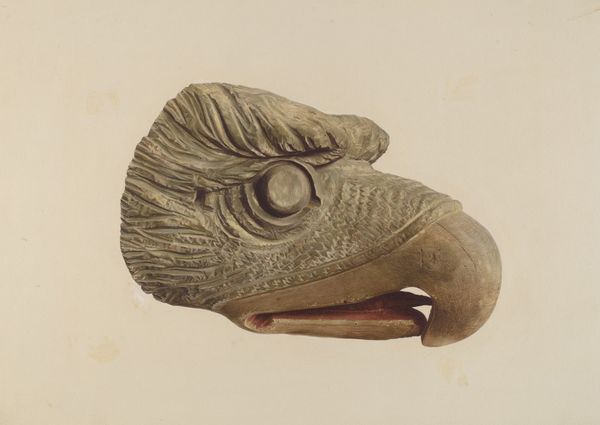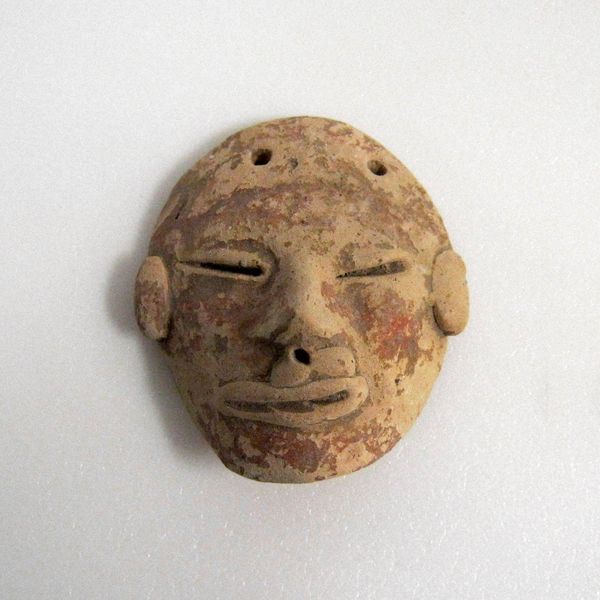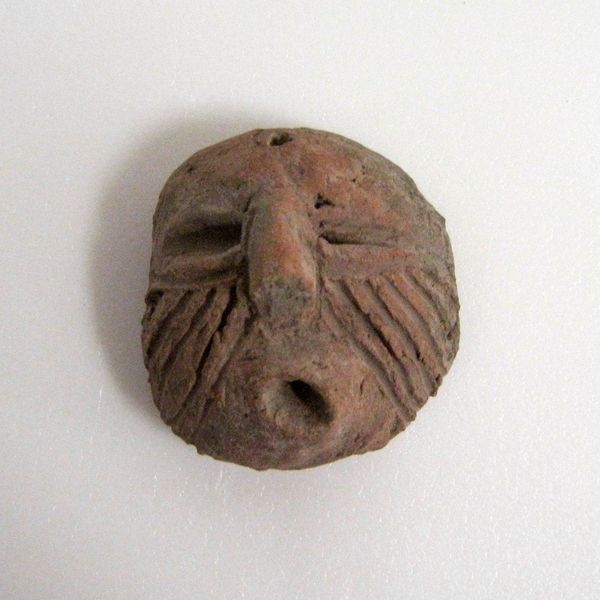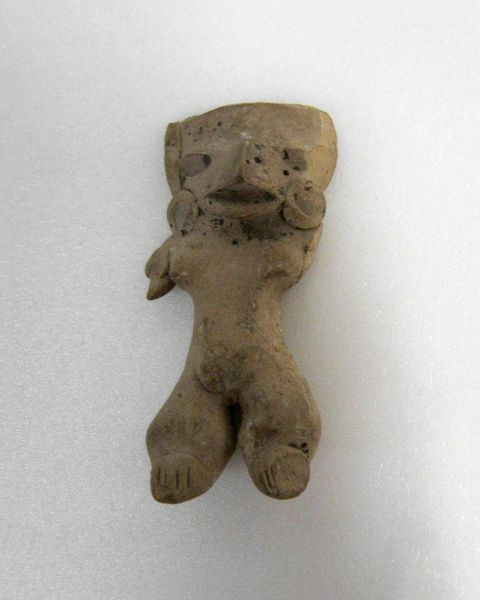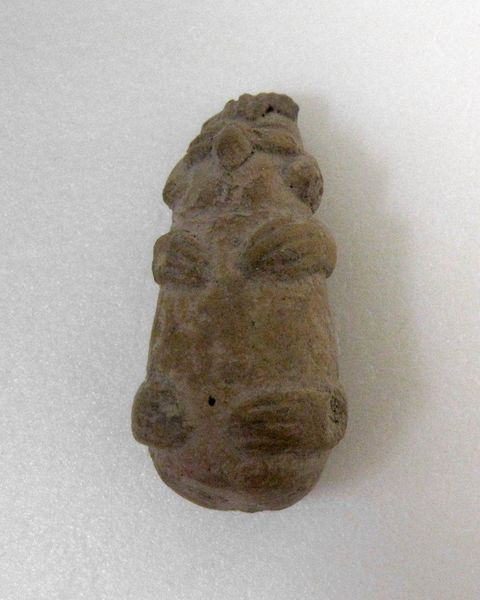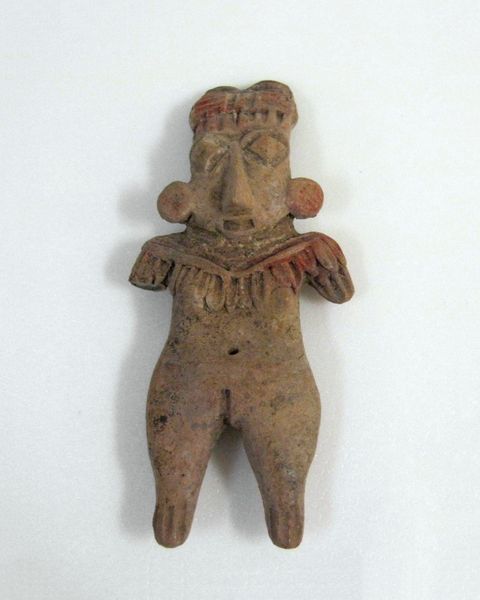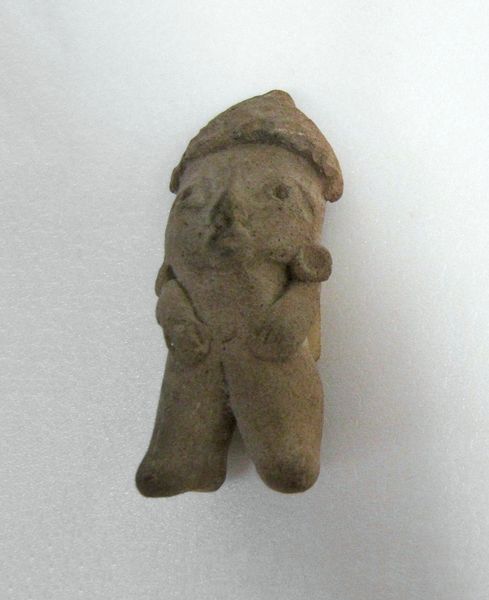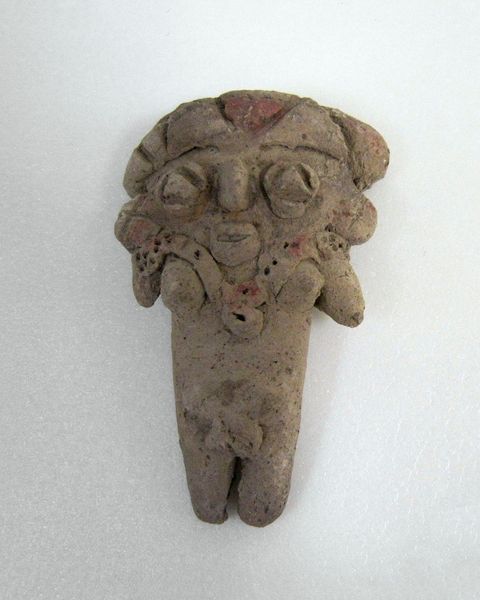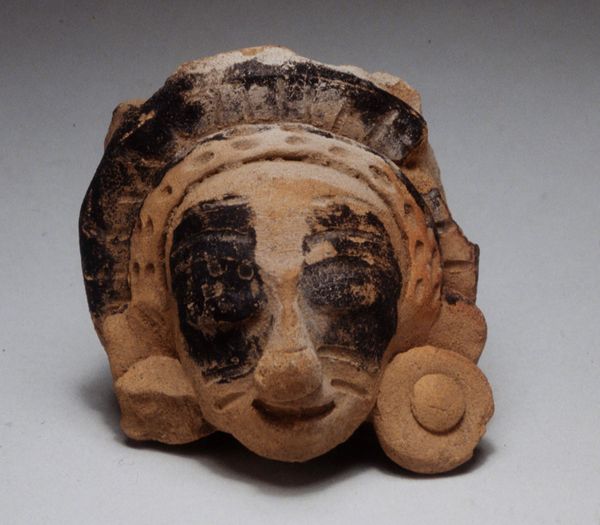
sculpture
#
sculpture
#
figuration
#
sculpture
Dimensions: 16 x 9 1/2 x 7 in. (40.6 x 24.1 x 17.8 cm)
Copyright: Public Domain
Curator: This intriguing piece is a Nok sculpture known as Burial Figure, dating from the 10th to the 13th century. It's currently housed at the Minneapolis Institute of Art. Editor: My first impression is of quiet solemnity. The figure's pose and texture give it a grounded, almost melancholic presence. I sense the weight of history, don’t you think? Curator: Absolutely. Focusing on its formal elements, the figure is rendered in a robust, stylized manner. The simplification of form suggests an emphasis on fundamental geometry—the interplay of curves and cylinders. Note the incised patterns, perhaps textile markings or ritual scars, carefully mapped onto the clay surface. Editor: There's a fascinating tension between the rough, earthly materiality of the clay and the smooth, almost meditative face. The lines around the body, like a secret language carved in the flesh—almost like it has a woven covering over it? That covering looks like some packaging from modern day but it is also intriguing and contrasting against the traditional, very, very old piece. Curator: The Nok culture, primarily situated in Nigeria, had mastered the art of terracotta sculpture centuries before extensive contact with other parts of the world. These sculptures often represent elite members of society, perhaps even deities. Editor: The downturned mouth, what is that all about? Is it a symbol of suffering? And those curious arms that are raised upward to meet the face as well… Perhaps a sign of reflection or supplication? It’s a figure shrouded in mystery. Curator: The sculpture is about the act of remembering ancestors and how their legacies are not necessarily tragic, but rather, that grief or reflection has an essential element of hope embedded into it as well. Editor: The thought of this figure presiding over ancient burial grounds evokes a sense of deep time. It prompts me to consider the fragile nature of memory, of human existence itself. We become part of it as observers and we must recognize and respect these ancient beings, and to never take these cultures lightly as a result. Curator: Precisely. And that tension—between the artwork’s concrete physicality and its evocation of a distant, somewhat irretrievable past—renders it endlessly compelling.
Comments
No comments
Be the first to comment and join the conversation on the ultimate creative platform.
